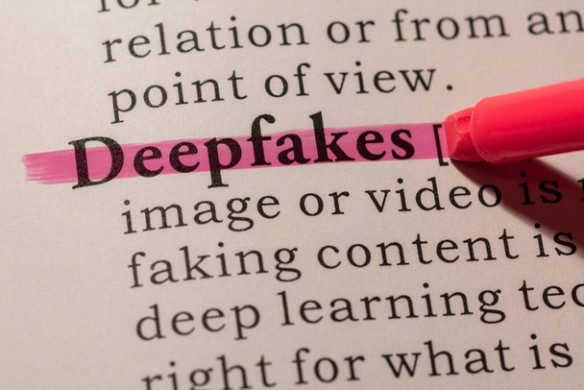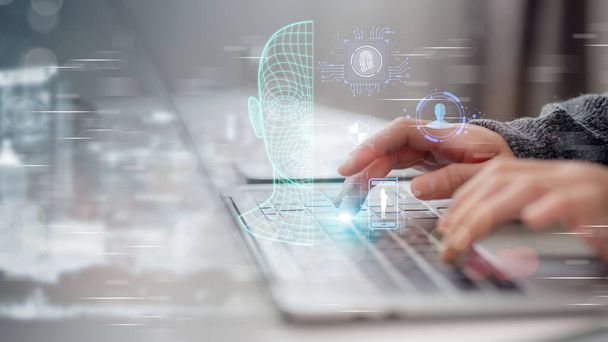Deepfakes, a combination of “deep learning” and “fake,” use AI to generate highly realistic images, videos, and voices. Through Generative Adversarial Networks (GANs), AI models create synthetic content by pitting two neural networks against each other—one generating fakes and the other evaluating their authenticity. This technology, while impressive, raises significant concerns around misinformation, identity theft, and cybersecurity threats.

Notable Deepfake Cases and Their Impact
Deepfake technology has been used both for creative and malicious purposes. Actor Jordan Peele demonstrated its deceptive potential by manipulating former U.S. President Barack Obama’s speech to warn against blindly trusting online content. Similarly, a Deepfake video of Facebook CEO Mark Zuckerberg falsely claimed Facebook “controls the future” by exploiting user data. Even simpler alterations, such as a slowed-down video of U.S. politician Nancy Pelosi, have spread misinformation. Female celebrities have also been victims of Deepfake revenge porn, demonstrating the technology’s potential for harm.
Deepfake Fraud and Blackmail
Beyond misinformation, Deepfakes are increasingly being weaponized for financial fraud and blackmail. In a notable case, scammers used AI-generated voice cloning to impersonate a CEO’s superior, tricking him into transferring $243,000. In another fraud case, con artist Gilbert Chikli posed as a French minister, staging video calls with executives and stealing millions. Journalists like Rana Ayyub have also been targeted with Deepfake pornography to intimidate them. As Deepfake creation becomes cheaper and more accessible, such attacks are likely to rise.
Recognizing and Defending Against Deepfakes
Governments are introducing laws to combat Deepfakes. California’s AB-602 bans AI-generated pornographic images without consent, while AB-730 prohibits manipulated political content before elections. However, laws alone cannot keep pace with evolving AI capabilities, making technological solutions crucial.

Source: create.vista.com
Cybersecurity experts are developing detection tools that analyze videos for inconsistencies, including 2D facial distortions, unnatural nose positioning, inconsistent lighting, and unusual blinking patterns. Individuals can also look for red flags such as:
• Jerky or unnatural movement
• Sudden lighting shifts
• Inconsistent skin tones
• Poorly synchronized lip movements
• Digital artifacts around the face
Advanced Solutions Against Deepfake Manipulation
To counter Deepfakes, developers are implementing cryptographic hashing in videos, ensuring any modification alters the hash, revealing tampering attempts. AI and blockchain are being explored for creating tamper-proof digital fingerprints for videos, similar to document watermarking. Additionally, digital “artifacts” embedded in videos can disrupt AI recognition, making Deepfake creation more difficult.
Strengthening Cybersecurity Measures
Beyond technology, robust security protocols help prevent Deepfake-related fraud. Best practices include:
• Multi-step approval processes for fund transfers to thwart financial scams
• Employee and public education on identifying manipulated content
• Fact-checking and verifying sources before sharing videos
• A “trust but verify” approach to digital communications
Additional cybersecurity habits can further reduce risks:
• Regular data backups to protect against ransomware
• Strong, unique passwords to prevent account breaches
• Comprehensive security solutions, such as Kaspersky Premium, offering antivirus tools, VPNs, and webcam security
The Future of Deepfakes
Deepfake technology is evolving rapidly. While early fakes were easy to detect due to unnatural movements and lack of blinking, AI has since improved, producing highly convincing fakes. Today, over 15,000 Deepfake videos circulate online, used for entertainment, fraud, and deception.
As technology advances, vigilance and adaptation are critical. A combination of legal action, AI-driven detection, cybersecurity awareness, and responsible media consumption remains the best defense against digital deception. Staying informed and skeptical of online content will be essential in mitigating the growing threats posed by Deepfakes.
Learn from market wizards: Books to take your trading to the next level

 Hot Features
Hot Features











